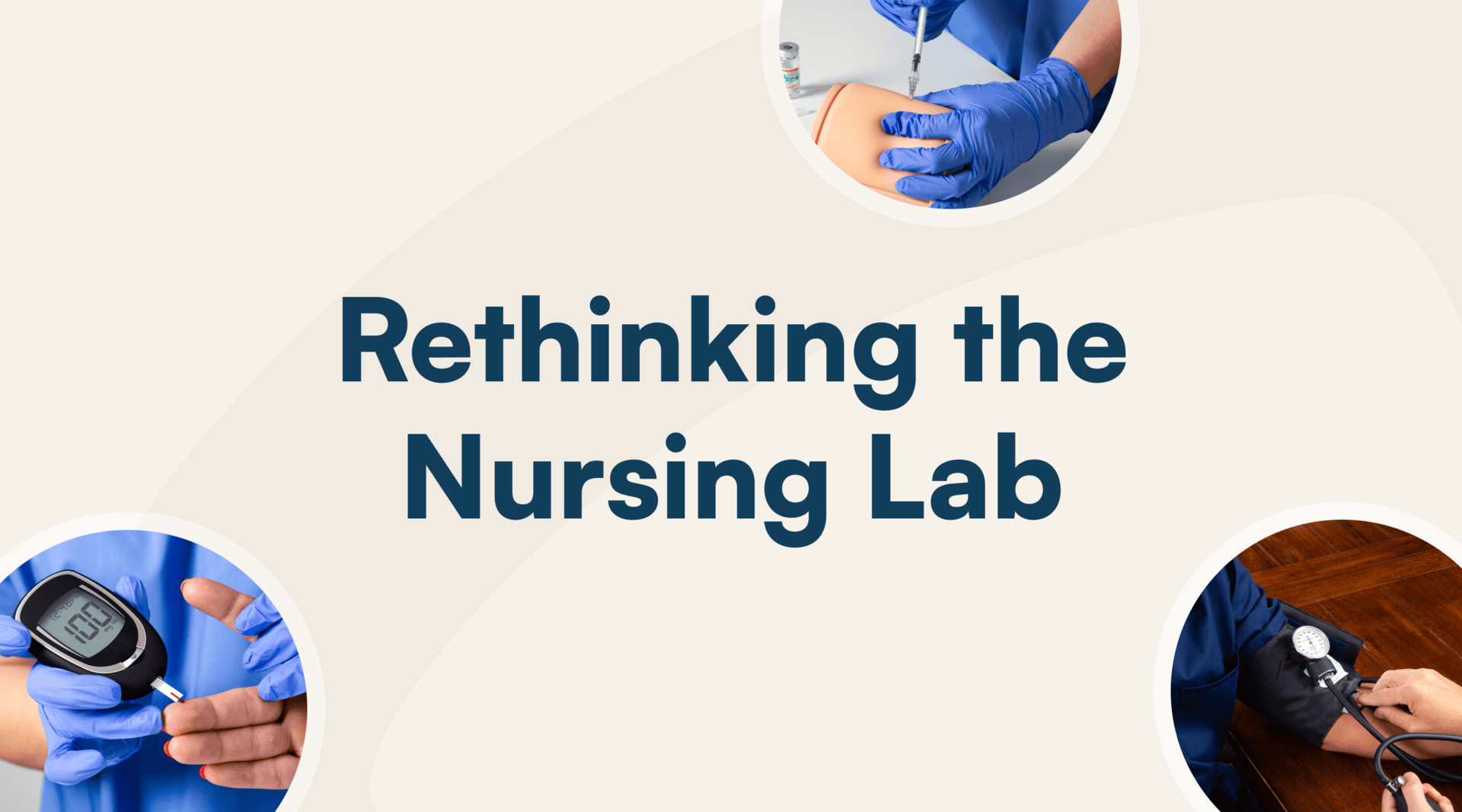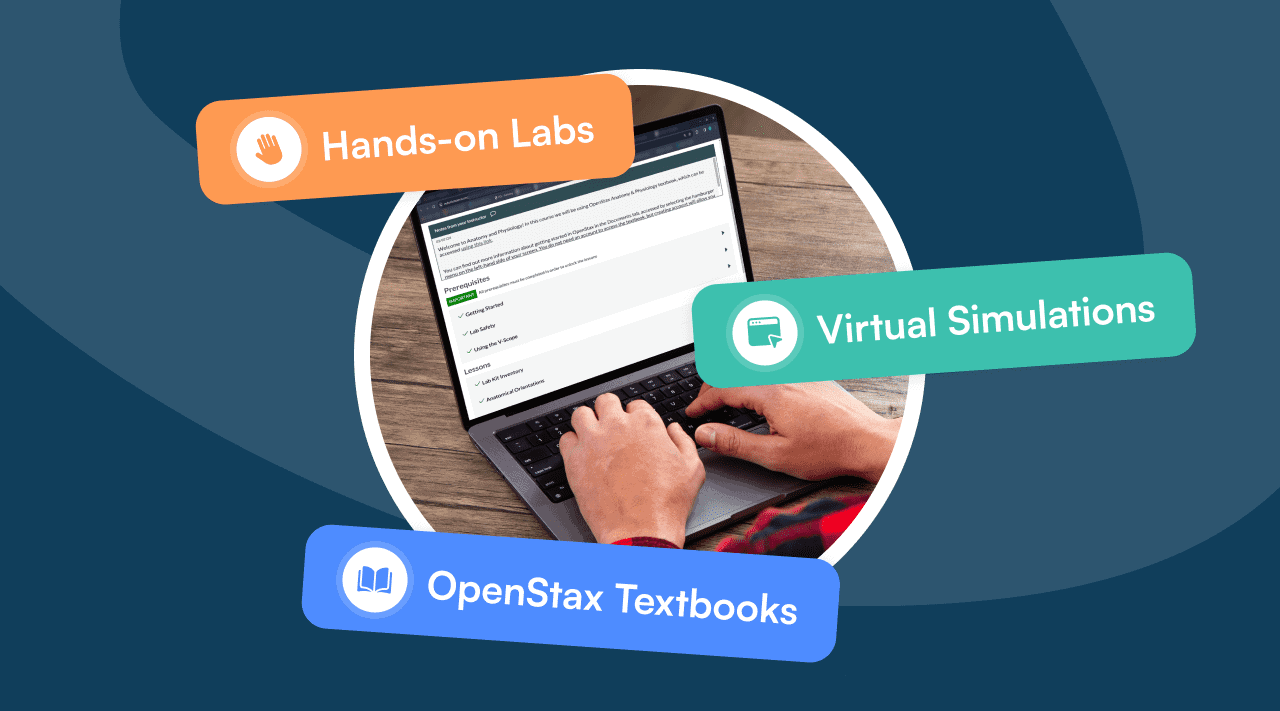If you’re asking yourself how to teach science labs online in a way that feels easier, seamless, and high quality, look no further. We know figuring out how to deliver an online lab that balances accessibility, affordability, and academic rigor while providing students with a campus lab-like experience is challenging.
The key is using an all-in-one solution that helps you deliver rigorous, real-world lab experiences that meet students where they are without breaking the bank. With a seamless blend of hands-on and virtual labs as well as OpenStax textbooks, you’ll be able to offer an integrated online lab experience that allows you to achieve your teaching objectives, while encouraging authentic scientific investigation for students.
When you bring the following areas together seamlessly, you’ll deliver an authentic online lab experience designed to deepen student learning and drive success—all while expanding access to science education.
- High quality hands-on & interactive virtual Labs
- Integrated, easily accessible OpenStax Textbooks
- Lab management directly integrated with your LMS
Why Fostering an Integrated Online Lab Experience is Important
With the demand for online science courses growing, it’s difficult for science educators to develop and scale online programs that cater to diverse student needs, remain budget-friendly, and deliver on learning outcomes—all while figuring out how to engage students virtually.
Still, students need a well-rounded online lab experience that includes an effective blend of hands-on and virtual lab simulations, and ample opportunities to apply concept and theory to the real world.
Consider this: In survey data collected from more than 1,290 students last year, 90% said it was very important to them to be able to take their science courses online. Add to that the fact that science-based occupations are projected to grow 10.8% this decade, there’s so much to gain by expanding access to labs through an online modality.
Take the University of California’s San Diego Division of Extended Studies. When they began using Science Interactive’s all-in-one solution, they were able to deliver a seamless and fully integrated online lab experience in their Science & Sustainability programs—reaching more students than ever which resulted in an enrollment gain of 8,000 students per year.
That said, the quality of the online lab experience matters. Features that have always informed a traditional classroom experience, like accessible instructional materials and opportunities to put theory into practice, are just as crucial in online courses. From the quality and rigor of course content and curriculum to the supporting resources, guidance, and tools used to deliver your labs, you have the chance to set students up for success beyond the confines of classroom walls.
Use High Quality Curriculum & Hands-On Labs for Rigor
When we asked 321 online science instructors what their biggest challenges were, an overwhelming majority cited this as one of the top concerns:
Ensuring the quality & rigor of course materials (26%)
One way to ensure a higher quality experience is to use curricula that’s aligned to Quality Matters standards. Quality Matters is the leading global organization for quality assurance in online and innovative digital teaching and learning environments. QM develops research-supported, practice-based quality standards in online education, based on instructional design principles for online and blended courses that promote student engagement in virtual learning.
| Fun Fact! Did you know Science Interactive’s 450+ hands-on & virtual labs are all aligned to Quality Matters standards? In fact, all 13 of Science Interactive’s disciplines, including Anatomy & Physiology, Biology, Microbiology, Chemistry, Organic Chemistry, and Physics, are certified by Quality Matters, which ensures that online students have the highest quality lab experience possible with clear expectations, relevant content and interaction, and engaging activities. Lessons are developed by an in-house team of PhD scientists, use input from active faculty, and are reviewed by our instructional designers for quality, accuracy, repeatability, safety, and ADA compliance. |
In addition to high quality curricula, you can incorporate active learning opportunities, even if you’re not there to supervise. In fact, an overwhelming majority of instructors (84%) used hands-on labs in their online courses because they felt it ensured a higher quality experience vs only using virtual simulations. Hands-on learning more deeply engages students and encourages them to apply what they have learned to the real world.
71% of instructors using hands-on labs felt their labs were comparable to an in-person experience
| See it in Action: Expanding Chemistry Courses to Non-traditional Students Using Hands-on Chemistry Lab Kits Professor Tamara Blagojevic focused on designing a real-world chemistry lab online. She was able to select hands-on labs and lessons that aligned with her course learning outcomes, along with the ready-made hands-on kits to conduct those labs. In one of her first labs, students learn to measure density. Having the ability to use lab grade beakers and measure the liquids gave students a more enriching experience than they would have had through simulation alone. While students perform the experiments independently, Professor Balgojevic sorts them into groups to work through lessons together so that they can collaborate and learn from each other throughout the course, similar to an on-campus learning experience. |
Additional research by The American Chemical Society reinforces the need for hands-on learning in science. Students who engage in hands-on laboratory experiences have a greater opportunity to develop problem-solving and critical-thinking skills, as well as gain exposure to reactions, materials, and equipment. The ACS research also shows that sustained investment in hands-on experiences help inspire students to further their education and prepare them for high-technology careers by fostering skills sought by potential employers.
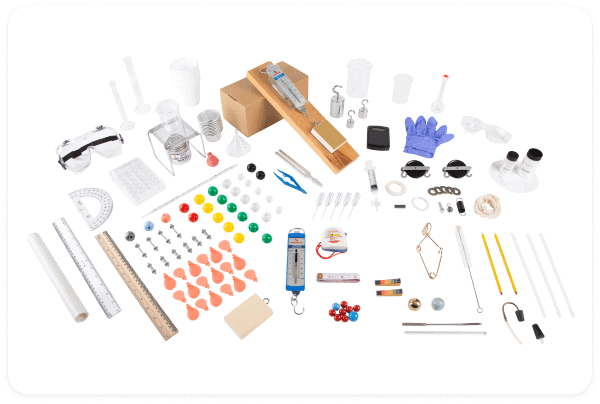
With access to the right tools and resources along with the flexibility to tailor curriculum to your teaching objectives, instructional style, and outcomes, you can create a quality online learning experience for students.
Deepen Student Learning with Virtual Labs & OpenStax Textbooks
In addition to hands-on labs, virtual labs provide their own benefits, which is why creating an intentional mix of hands-on and virtual labs is critical for student learning.
There are several situations in which using a virtual lab makes sense. For example, consider using virtual labs when:
- You want students to observe the unobservable. Climate change and evolution, for example, can be simulated using an online lab but would be difficult to teach physically. Similarly, labs that use hazardous chemicals like lead or sulfuric acid and don’t have convincingly low-hazard / high quality alternatives are great candidates for virtual labs.
- You want to supplement learning and allow for repeatability in a low-stakes environment. Unlike the finite materials of a physical hands-on lab, it doesn’t matter, except in time, whether a student runs a digital experiment one time or 20 times to get the desired result. With each simulation, students can manipulate variables, run the experiment, and immediately see the results, which is especially important for struggling students and those who simply want to understand something better.
- You want to vary learning activities for students and balance the ways you engage different styles of learning.
While we know relying solely on virtual science labs for higher education often falls short of providing students with the experiences they need to apply their learning in the real world, virtual labs aid in practicality. They give students the chance to experiment with things that wouldn’t be feasible to do hands-on at home or in person.
For example, consider an Anatomy & Physiology course where part of the curriculum includes exploring an electrocardiogram (ECG or EKG), which records the electrical signal from the heart to check for different heart conditions. An electrocardiogram is far too costly for both in-person or at-home hands-on labs. This lends itself perfectly to a virtual simulation, still allowing students the opportunity to explore what an EKG does.
Using an intentional mix of virtual labs with hands-on gives you more flexibility in what you cover in your course, can supplement student learning, and can help you to achieve your teaching objectives more effectively—with the added bonus of balancing out costs.
Leverage OpenStax Textbooks
In addition to pairing hands-on and virtual labs, the instructional materials you use also make a difference when it comes to the student experience.
From textbooks to additional materials, PDFs, and resources, costs can start to add up. On top of that, when your instructional materials are siloed, or have to be accessed in different ways through different systems, it creates confusion for students and can make deeper engagement with the material more difficult.
Consider using OpenStax textbooks integrated within your lab management platform. OpenStax’s free, high-quality, peer-reviewed, openly licensed textbooks are accessible right from Science Interactive’s lab platform, allowing you to use high-quality instructional materials and lab curricula without any additional fees or cost to students. Students have easy access to the text, especially at the moments when it matters most—when completing labs. They’ll find answers and get unstuck faster when up against a problem, and be able to better connect theoretical concepts to what they’re learning in the lab.
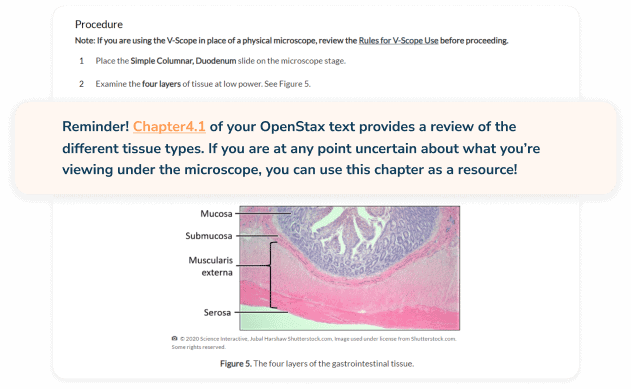
“Having lab materials and the OpenStax text on the same platform improves the student’s learning experience and grasp of the materials. Seamless integration of hands-on labs, virtual simulations, and the textbook makes it easier for students to connect what they are reading to what they are doing in lab, and this reinforcement means that they can better retain the concepts. This also makes it easier for instructors to assess student learning and see where each student is struggling–offering the instructor the opportunity to remediate the student more quickly and ensure success.”
Amy Daniels, Assistant Professor at Greenville Technical College
Integrating OpenStax textbooks into the lab management platform creates a more positive and seamless learning experience so students never have to leave the system to access course material, reducing an important and potential barrier to student participation. And just like virtual labs, the integrated OpenStax textbooks help you maintain course affordability, which is important for increasing access to science education for nontraditional students (e.g. those working full-time, caretakers and parents, or students in more rural communities).
| One Place for All Your Online Lab Lessons Whether you’re teaching Anatomy & Physiology, Biology, Microbiology, Chemistry, Organic Chemistry, or Physics, we house all of your instructional content in one place. Where students submit their lab reports is also where they access all of your course materials and texts, making access easy and providing a more seamless experience. Each of these disciplines has its OpenStax textbook integrated into the lab management platform so students don’t need to go anywhere else or purchase additional textbooks, reducing costs. With more than 184 hands-on and virtual lab options across these 6 disciplines alone, you’re sure to build a high quality, affordable online lab experience. |
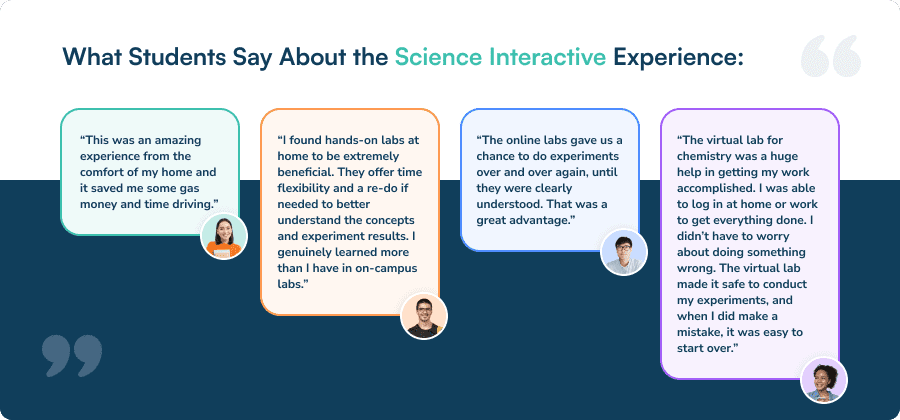
Keep Lab Management Simple & Seamless
Finally, we can’t talk about creating an integrated online lab experience without discussing technology. The most effective all-in-one solution integrates hands-on and virtual labs with OpenStax textbooks and then makes all of it easy to access directly from your LMS.
In fact, the best virtual lab software should allow you to manage every element of your lab course in one place. But far too often, the tools we choose for learning online can create barriers: too many logins, hard-to-use interfaces, and tools that don’t work for everyone are just a few examples.
But consider this: When a student can find instructional materials easily and accomplish a task in a new platform the first time they use it, these small achievements can have a significant impact on student confidence and willingness to engage—strong components of student success.
Similarly, for an instructor, it just makes sense that everything be housed in an easy-to-use platform that integrates with your LMS. Relying on a variety of disconnected tools and resources will only create additional barriers and more work for you and your students. Instead use an integrated lab management platform like Science Interactive to:
✔ Deliver instructional content, resources, and media
✔ Provide guidance and safety instructions
✔ Have students submit assignments and lab reports
✔ Assess student performance and provide feedback for improvement
✔ Identify students falling behind so you can get them back on track sooner
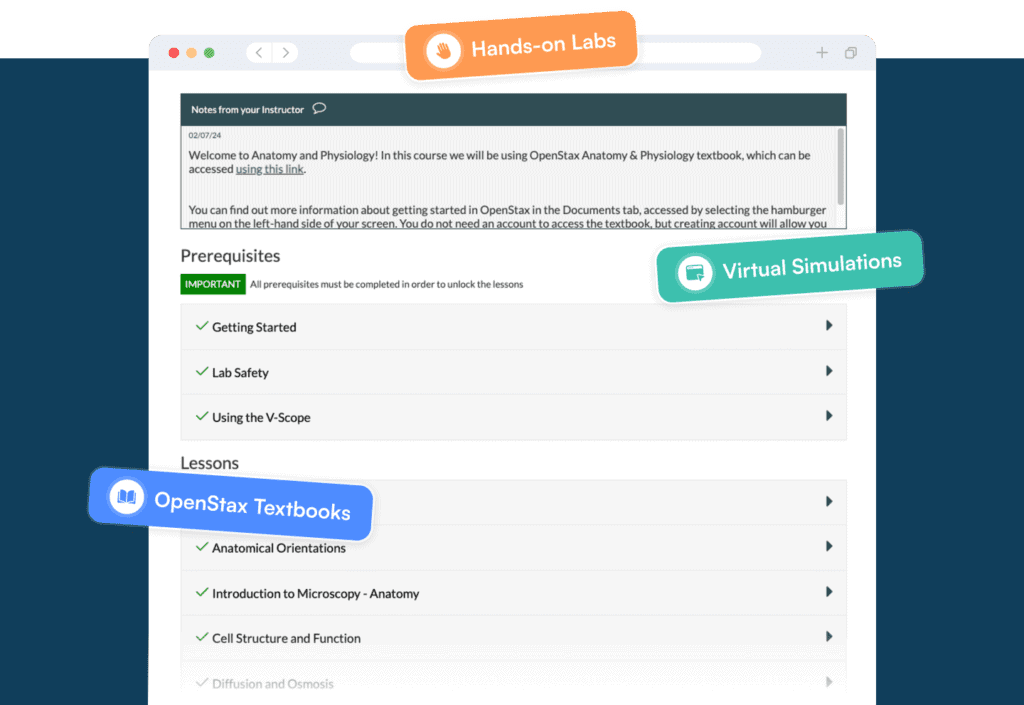
And one of the best parts of all, because grades automatically sync with your LMS, you’ll save time and be able to focus on what matters most: student success.
A Seamless Blend of Hands-on & Virtual Labs with OpenStax Textbooks for an Integrated Online Lab Experience
From ensuring quality, rigor, and affordability to customizing curriculum and making sure it’s easy to access, we know there are a lot of moving parts you have to think about when it comes to offering science labs online.
That said, the demand for online learning will only continue to grow, providing you with an important opportunity to expand access to science education. Using this approach and the right partner, you can deliver a quality online lab experience more easily than ever—with everything you need right at your fingertips.
With hundreds of high quality hands-on and virtual labs, Quality Matters-certified disciplines, and OpenStax textbooks accessible from the same lab management platform you use to assess students, you can create an integrated online lab experience without compromising on quality or breaking the bank.
The best part of all… you can be confident you’re fostering the kind of learning experience that drives better student outcomes.
Want to know more? Start by seeing what an all-in-one solution for quality online labs can look like for your courses!
One Platform. One Partner.
Countless Ways to Deliver Quality Labs Online.
Discover more articles
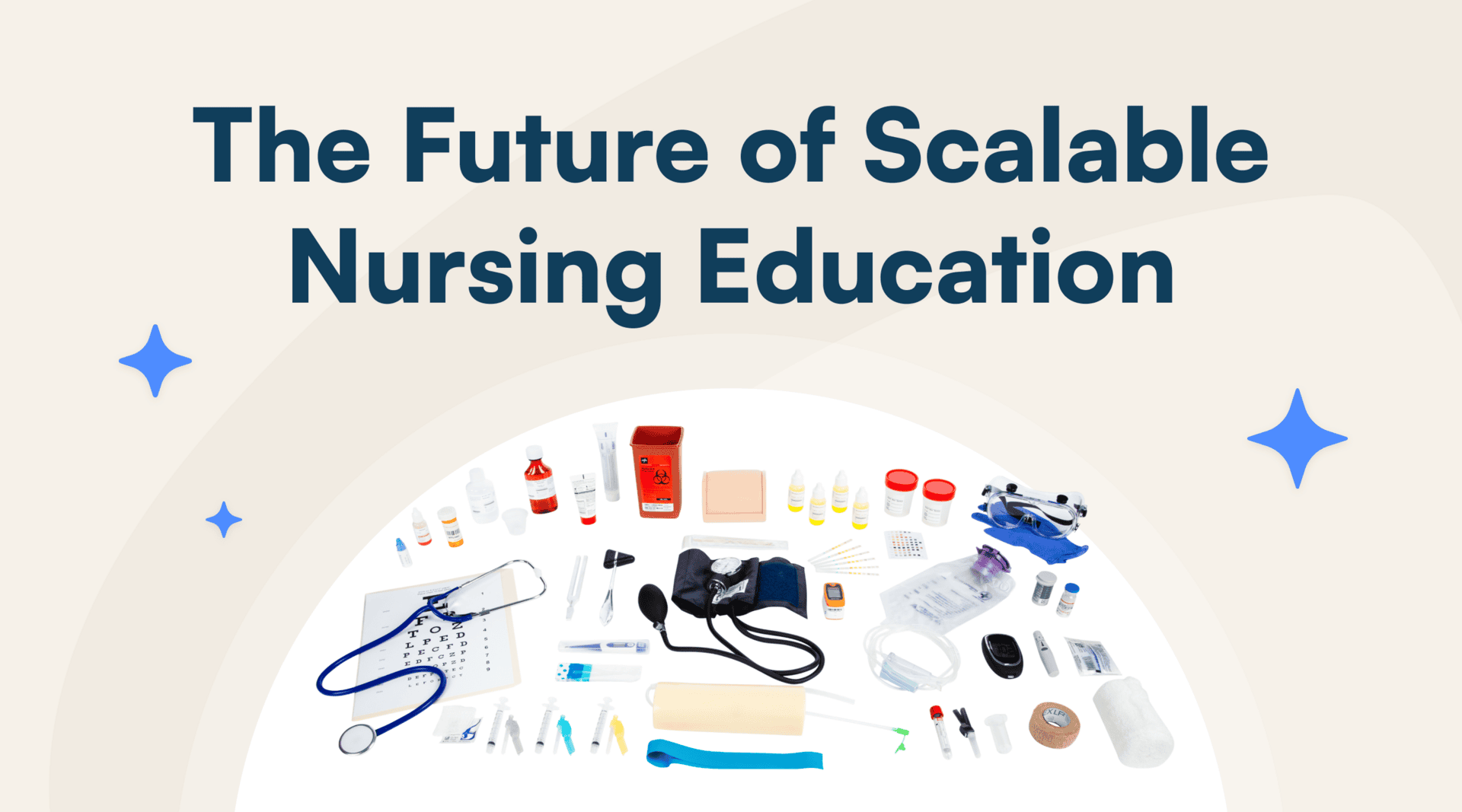
Science Interactive Launches New Nursing Fundamentals
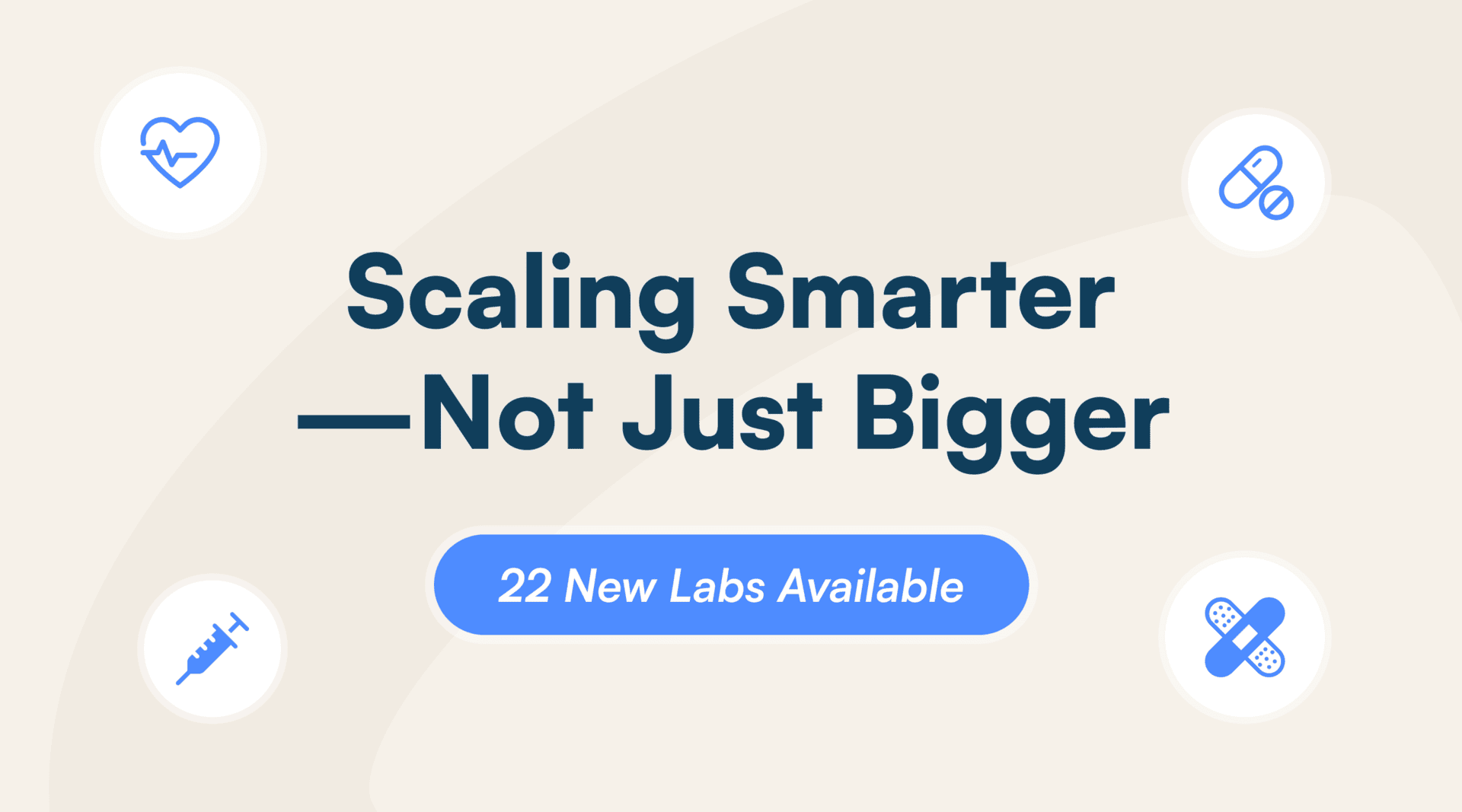
What Clinical-Ready Actually Looks Like (And How to Get There Sooner)
